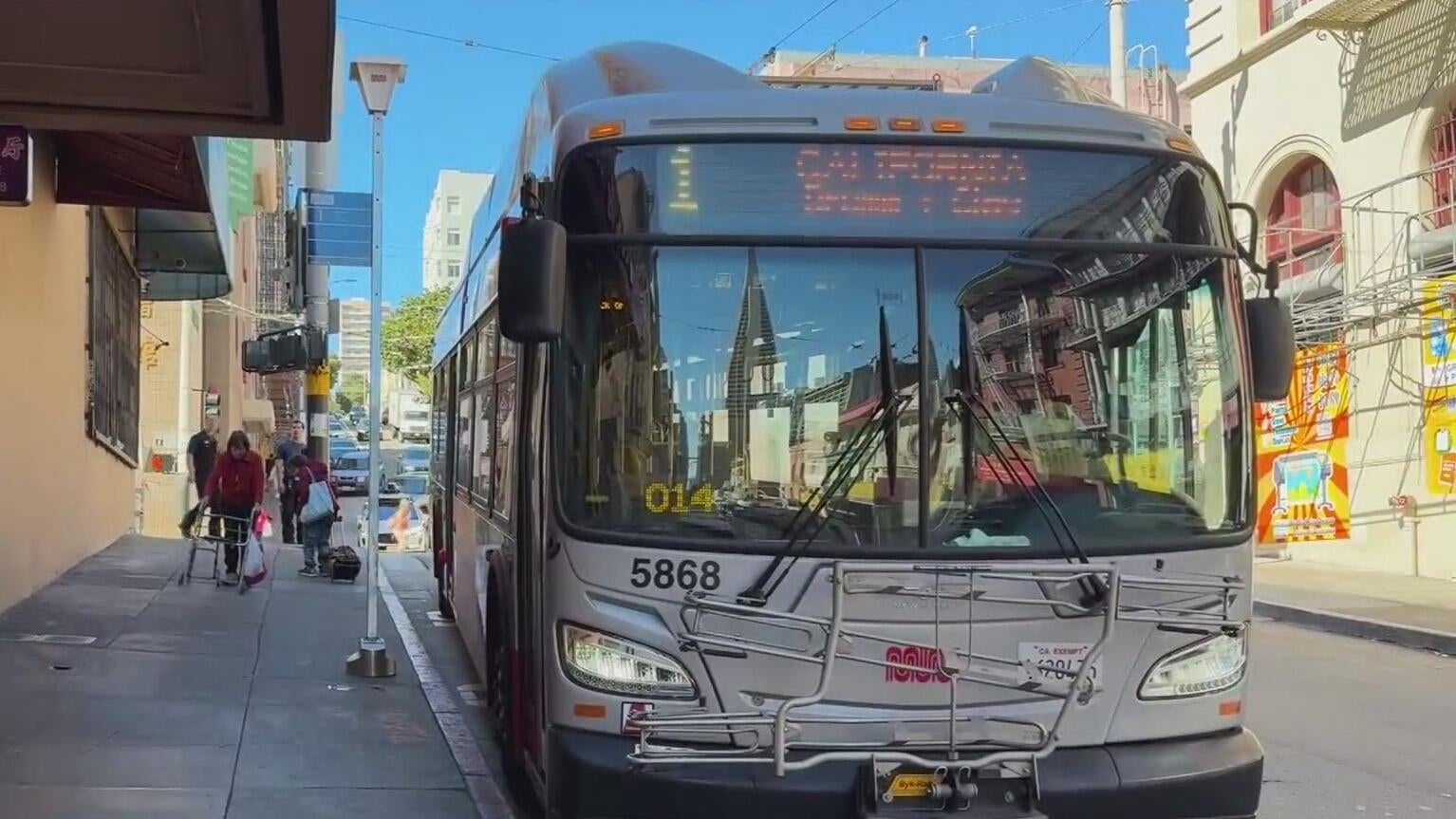Bay Area Transit Month comes as agencies face rising ridership, looming deficits
Another day, another ride on Muni, for Maria Meyer.
She's a regular public transit user who's rode the bus for over 50 years. Meyer is not associated with any transit advocacy groups.
Her honest take on public transit right now?
"It's working really well for me," she said. Based on what she sees on a daily basis, Meyer said regular ridership must be improving.
"More people are going to work downtown and I see more people on the buses," she said.
Meyer is correct, though, it's a bit complicated.
Ridership is recovering for Muni and public transit systems across the board. But it's happening slowly, and the agencies are facing massive budget shortfalls.
Muni's average weekday ridership in June was at 482,160 people, per SFMTA data. That's more than last June.
But it's still only at about 68% of pre-pandemic ridership – at 709,550, in June of 2019, per SFMTA data. Muni currently faces a $320 million budget deficit that has potential to grow as high as $434 million by 2030.
BART just saw its best month since before the pandemic, with the average weekday ridership in August at 186,515, per agency data. However, that is about 45% of the level it stood at in August of 2019 – at 410,854.
Alicia Trost, BART's Chief Communication Officer, said momentum will continue in September, which is already poised to outpace August's high. When it comes to the budget, BART is starting down deficit that could grow to $400 million by 2027.
Caltrain's August ridership stood at 39,985, which is a 61.5% increase from August of 2024, per agency data. However, that figure puts the railway at 55.9% of pre-pandemic levels, where the average weekday ridership in August of 2019 stood at 71,557. As for the budget, Caltrain projects a $75 million deficit between FY 2027-FY 2035.
"The different agencies need to communicate better to make one system where all of which support one another better," Meyer said.
Trost says that is beginning to happen in ways it hasn't before.
"Every transit system is working together – not as separate agencies – but finally, as one network where we are syncing our schedules, we're talking about the rider experience so that when you go from one system to the next it's that easy transfer," she said. "We need to act as one network now more than ever before, especially as we're asking for greater investments."
That message comes during Transit Month, a time to celebrate and encourage people to take public transit. Trost and BART leaders spent a day giving out prizes to transit riders in one of the numerous events put on by public transit agencies throughout September.
"Come give us a try – especially if you haven't been back in several years – because things are very different," she said. "We need to show the Bay Area, it's not business as usual when it comes to transit."
Transit agency leaders continue to urge Gov. Gavin Newsom to sign SB 63, a $750 million lifeline to keep transit moving for the next few years until voters have the chance to weigh in on an anticipated 2026 tax measure that would fund public transit.
"We're really at an inflection point in our public transit system," said Kaleo Mark, with Seamless Bay Area. "I think there are a lot of valid concerns about public transit. But I don't think that's a reason to destroy public transit and make it fail; I think that's a reason for us to invest more resources into it and make it even better."
Seamless Bay Area is one of the advocacy groups that helped create Transit Month.
Jaime Viloria is with San Francisco Transit Riders, the other advocacy group that helped create the celebration.
"This is an opportunity to really rethink how we fund public transit," he said.
Both Mark and Viloria argue the Bay Area will be better off economically and environmentally with a stronger public transit system.
"It's really important that we not only protect the system that we have but improve it for riders so that we can attract more people to take the system," Mark said.
"If we don't fund transit soon, we're just going to take two or three steps back. It's going to be more expensive trying to bring us back to where we are at right now," Viloria said.
Like many, Meyer knows the road ahead for public transit isn't necessarily straightforward.
"I'd like to see it expanded. I mean, I understand you can't work with no money. But I do think it would be kind of, a false economy, to pretend that it doesn't have a major impact on life here," she said.
Newsom has until October 12 to sign or veto SB 63.
